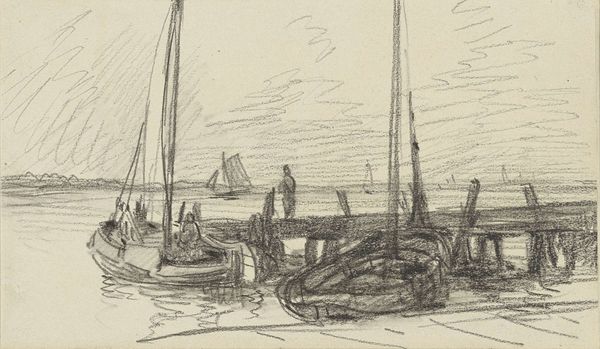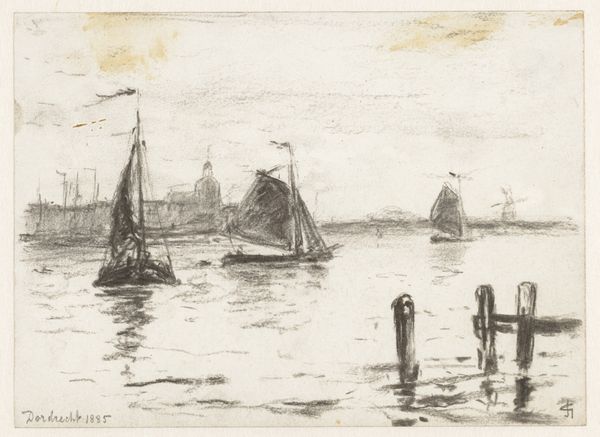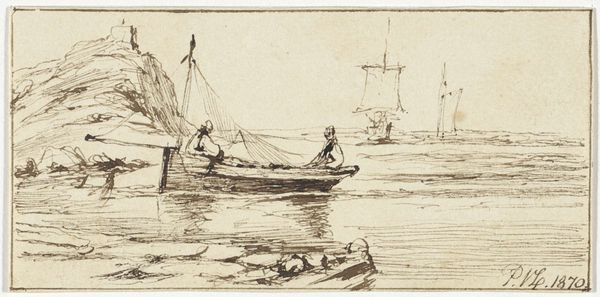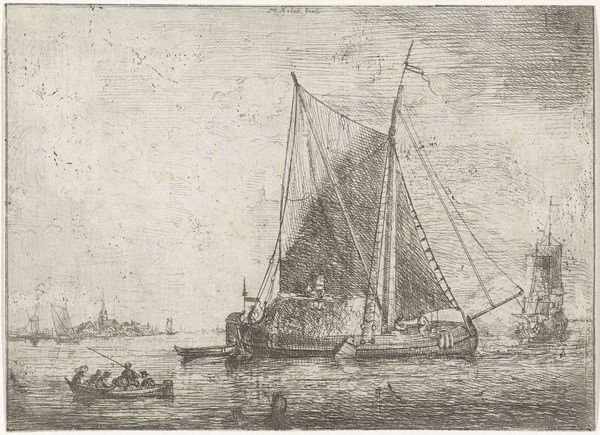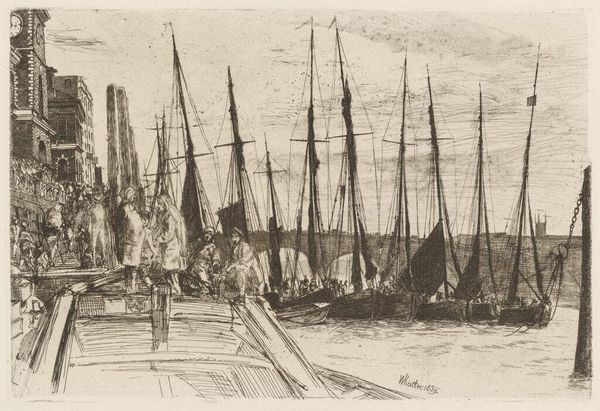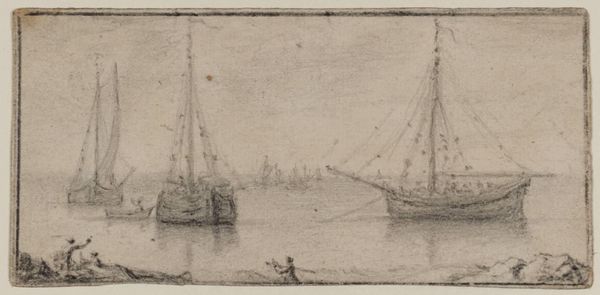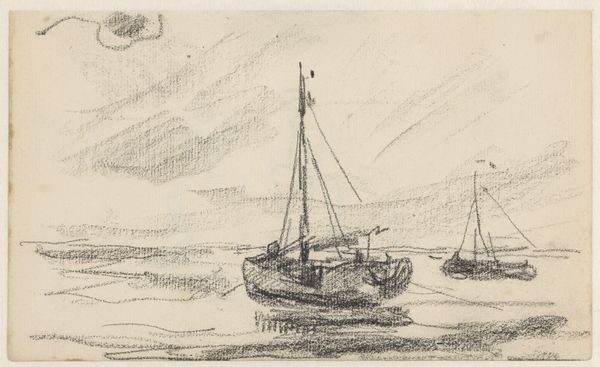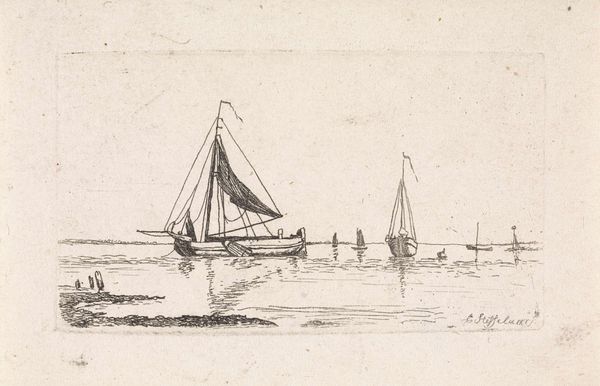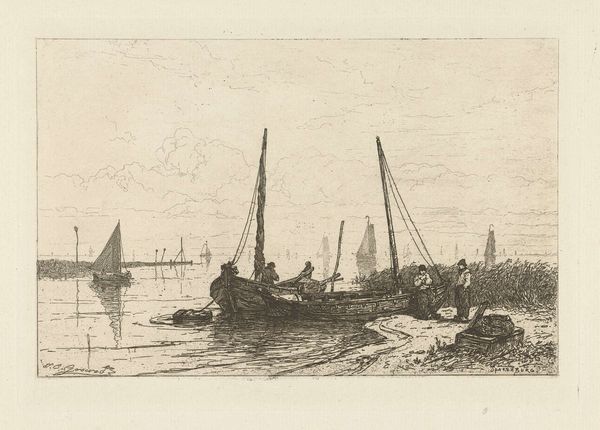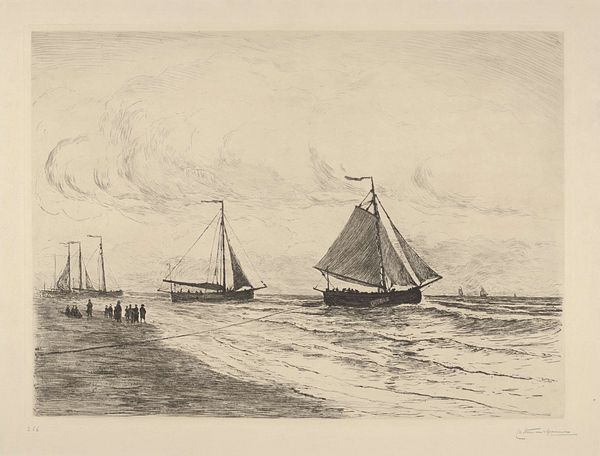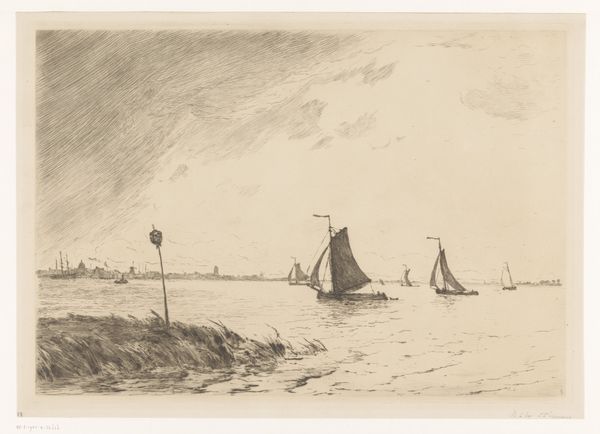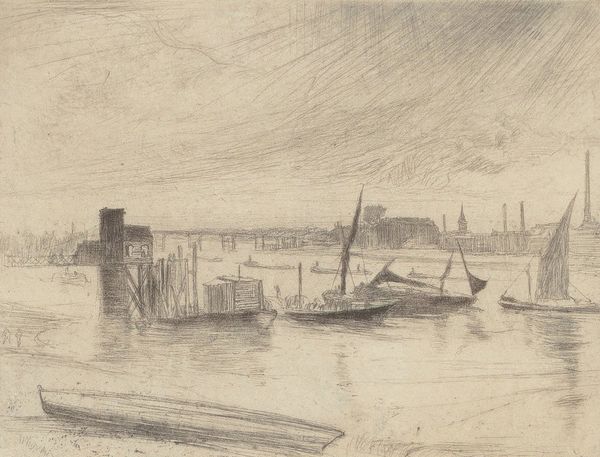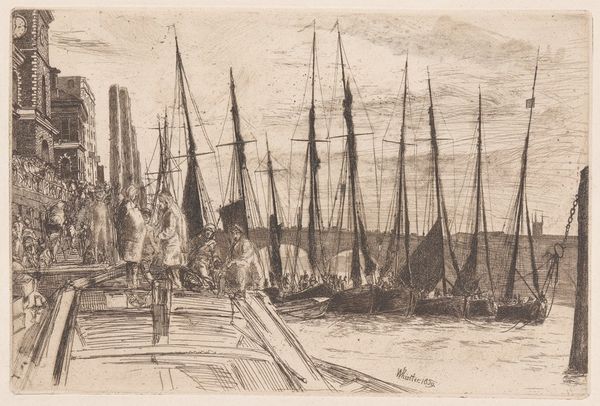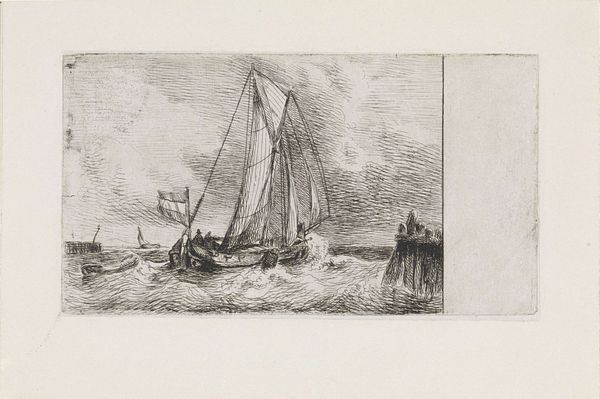
drawing, pencil
#
drawing
#
pencil sketch
#
landscape
#
romanticism
#
pencil
#
cityscape
#
realism
Copyright: Public Domain: Artvee
Curator: This is John Constable's "Shipping on the Thames," a pencil drawing created around 1818. What are your first impressions? Editor: Immediately, I see a socio-economic stratification represented through the maritime setting, highlighting labor, industry, and power, all existing with different access and proximity to the waters. Curator: Indeed. Constable seems drawn to the Thames not just for its scenic qualities, but perhaps also for its role as a symbolic artery of English commerce. He repeatedly sketched it and other waterways throughout his career. Think of the pencil lines and the vessels portrayed as more than literal boats; see them instead as vehicles laden with symbolic intent. Editor: Yes, the "vessels laden with symbolic intent," a Romantic obsession with progress—yet here they’re seemingly stuck in the Thames's mud. Their grounded state brings forth questions: Who commands these vessels, and for whose benefit do they sail or stagnate? We're reminded that Romanticism wasn’t devoid of the realities of industrial inequality, but it often obscures their impact. Curator: It's interesting you highlight this duality of stagnation and movement. For Constable, though, it was less about indicting inequality and more about visually capturing the essence of a working river, its character reflected through meticulous depiction of the masts, rigging, and cloud formations above, drawing inspiration from the Dutch masters, particularly Jacob van Ruisdael, who imbued nature with powerful presence. Editor: But even in Ruisdael’s influence, one can draw parallels to colonial exploits, right? Dutch Golden Age painting wasn't simply an aesthetic exercise, but a visual manifestation of dominance during that era. So, is Constable just carrying forward this legacy through a British lens? Curator: Possibly, though Constable certainly transformed the language of landscape into something intensely personal and subjective. "Shipping on the Thames," rather than aggrandizing national power, suggests instead a deep meditation on nature’s transience and humanity’s place within its unfolding dramas, and that also marks its uniqueness within the Romantic movement. Editor: I agree—even while implicating ourselves within this history, it is not something he could have entirely ignored, consciously or unconsciously, embedding these issues into his atmospheric compositions and his exploration of the urban Thames. It all invites ongoing discussions on history, identity, and labor in an ever-evolving landscape. Curator: Well, these ships keep our analysis afloat; each element acts as a mnemonic anchor across the water! Editor: Exactly; thank you for charting these visual histories with me; together we have created more routes for thinking.
Comments
No comments
Be the first to comment and join the conversation on the ultimate creative platform.
